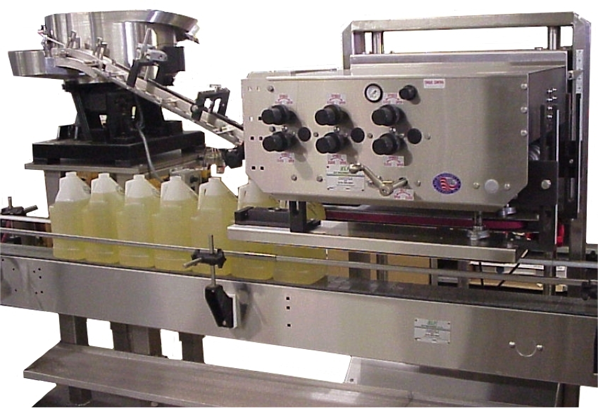 Loading... Please wait...
Loading... Please wait...Capping Machine Applications and Uses
Posted by Krys Beal on 15th Jan 2019

When your business packages liquid goods, applying a cap or lid to each container securely is an essential part of the process. If you’re not currently shipping out a lot of product, or if you don’t have a complete packaging line up and running quite yet, you may not have implemented having a capping machine into the line yet. If you’re still capping your containers manually, you could be wasting a lot of time making sure that each cap is tightened or snapped securely into place. Instead, consider automating the process by integrating a capping machine into your line.
Why Use Capping Machines?
Capping machines not only speed up the process of finishing packaging of your product, but they also ensure that each cap is sanitary and that the product does not get contaminated by handling. Additionally, they allow you to save yourself from the repetitive motions of placing and tightening caps to each container yourself. There are a number of different capping machines that can help you package more product in less time—and not just the machines that place the caps on, either.
How Can Capping Machines Benefit Your Business?
Capping machines can not only save time, but they can streamline the process of placing caps on containers and getting products ready for shipping. For example, instead of having to manually sort caps or manually place and tighten caps, you can let a machine do all the work for a uniform, consistent result. If your containers require plugs and not proper caps, there are also machines that can take care of that job, such as automatic vertical wheel pluggers. Save time and produce more consistent packaging with automated machinery. Add in a piece at a time, or purchase an entire system at once—whatever your budget allows.
Types of Capping Machines
Among capping machinery, there are a few different classes – the actual capping machines, cap sorters and cap elevators. Cap sorters work with the caps to orient them correctly before sending them along the line to the capping machines for placement. Cap elevators are part of a cap feeding system, and they are used to increase the efficiency of automatic capping machines as well as container unscrambling as the caps are pulled from a hopper and then transported to the next stop in the line. As for the actual capping machines, those include:
- Chuck cappers: Chuck cappers work by placing a cap onto a container, then sending it through the machine, where the moving parts spin the cap so it is sealed tightly. With this machine, the container is in continuous motion, rather than stopping at a spin station, as happens with spindle cappers.
- Spindle cappers: A similar machine to chuck cappers, instead these stop the containers at stations and spin the caps onto the container while the containers remain stationary.
- Snap cappers: Snap cappers work by pressing a snap-on cap to each container as it traverses through the machine.
- Vertical wheel pluggers: Finally, wheel pluggers are used where the containers being sealed require a plug instead of a cap placed on top.
- In addition to these capping machines, you may also want to consider accessory machines for inline capping systems. These can include:
Using a combination of these machines, you can efficiently apply caps to nearly any type of container, regardless of shape or size.
What Industries Use Capping Machines?
Like most packaging machinery, capping machines are used in a variety of different industries. Just a few of these industries are:
- Beverage and food
- Distilled spirits and wine
- Candles, lip balms, and molten products
- Cleaning products
- Pharmaceutical and medical
- Paints, stains, and sealants (home improvement)
- Personal care/health and beauty
If you have questions about capping machinery and want to
know more about the ones you should choose for your line,
contact E-PAK at any
time—we’re happy to offer our insight.

